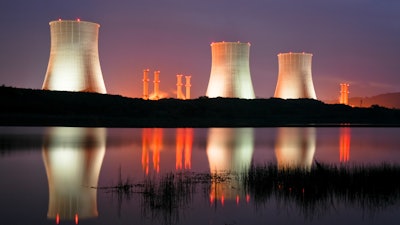
A recent report from the U.S. Energy Information Administration shows that U.S. production of uranium concentrate (U3O8) totaled 2.9 million pounds in 2016, 13 percent lower than the uranium produced in 2015 and the lowest annual U.S. production since 2005. U.S. uranium concentrate production in 2016 was less than seven percent of the historical peak production level of 43.7 million pounds in 1980.
Most of the uranium loaded into U.S. nuclear power reactors is imported. Based on the latest annual data, owners and operators of U.S. nuclear power reactors purchased 57 million pounds of uranium in 2015. Nearly half of these purchases originated from two countries, Canada and Kazakhstan, which provided 17 million pounds and 11 million pounds of uranium, respectively.
Seven facilities in three states produced uranium concentrate in 2016. Five facilities in Wyoming and one in Nebraska produced uranium concentrate at in-situ (or in place) leach plants. These plants extract uranium oxide from underground source rock using an acidic water-based solution pumped into the source rock through injection wells. The solution is then extracted and uranium chemically separated out.
Uranium concentrate can also be produced from uranium ore. The White Mesa Mill in Utah produces uranium by crushing and grinding uranium ore into a fine powder. Chemicals are added to the powder to separate uranium from other minerals.
The concentrated uranium product is typically a bright yellow or orange powder called yellowcake. Yellowcake is later converted into uranium hexafluoride (UF6) gas at a converter facility and then enriched to produce certain isotopes of uranium. The most common isotope of uranium in nature is uranium-238, which makes up more than 99 percent of natural uranium; other naturally occurring isotopes, uranium-235 and uranium-234, are less common.
To produce enriched uranium, different uranium isotopes are separated at enrichment facilities either by centrifugal processes or by gaseous diffusion. The enriched UF6 gas is then converted into uranium dioxide powder, formed into fuel pellets, and loaded into the fuel assemblies used to fuel nuclear power plants.
More information on the U.S. uranium industry is available in EIA's Quarterly Domestic Uranium Production Report.






















